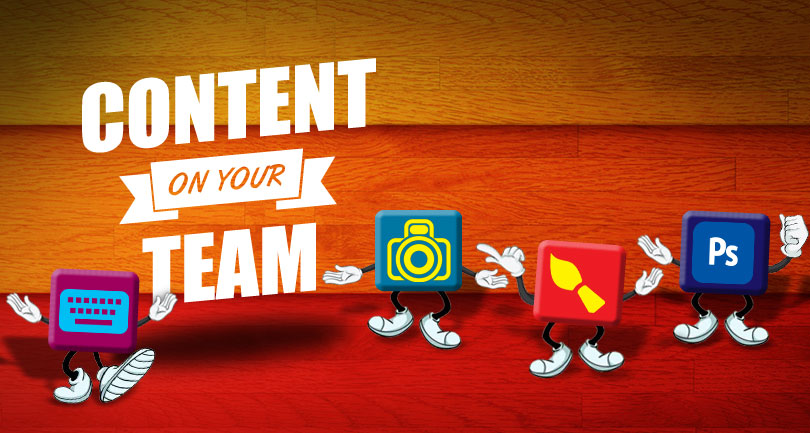
Put Content People on Your Team
A guest post by Jill Cherpack
Yes. Really ON your team.
When it comes to marketing and communications, brands — including your clients — tend to chase the Next Big Thing. In the world of big things, content, at the moment, is about as big as it gets. Clients have built entire infrastructures for content creation. Agencies have morphed into content suppliers, and associations have sprung up to support the industry and fan the flame.
For designers and web firms, the content explosion is a good thing.
It expands and improves the realm for which your talents are needed. Ka-ching!
If you’re already cozy with content creators, that’s good. You’re increasing your opportunities to produce more and better work across the chain of creation. Whether they are freelance, in-house, or embedded in your client’s firm, a close and trusting relationship with content people will extend your capabilities resulting to better UX, and ultimately, help to fatten your wallet.
Interacting With People
Quite often, however, designers, developers, producers, and project managers interact with content people in a strictly transactional way and vice versa. (Of course sometimes you deal with each other that way too. But we’ll save that issue for another time.)
Here’s what I mean by a transactional relationship. First, imagine using your phone as a phone. Then picture this conversation:
Content Person: “Um, probably Tuesday night.”
You: “Is it all the same stuff we talked about?”
Content Person: “Yep.”
You: “Okay thanks.”
Content Person: “Okay. Later.”
You: “Okay bye.”
Content Person: “Bye.”
Factors for Disconnected Relationships Within Your Team
There are lots of reasons for this transactional behavior and a lower level of teaming with content people.
Time stress is a big factor.
When schedules compress and you’re eating lunch (and dinner) over your keyboard, you’re not breaking bread with a content colleague (or any other type of colleague). Schedule compression and your own dedication rob you of the time to grow relationships with collaborators who can one day lift your work — and maybe even your spirits — to a whole new level.
Physical proximity, office culture, skills, work orientation, high pressure, and herd mentality are all legitimate reasons that explain the state of low relationships between content people and others on a web team.
Technical Elitism
Another reason is a condition of low regard for contributors who are less technical than you or not technical at all. Technical elitism is a sort of technical debt, with downside risk in the form of missed opportunity that a warmer and more inclusive attitude would enable.
To be perfectly fair and balanced, few content people spend their days extending olive branches to technical staff. We don’t invite you to lunch very often, if at all. (We too have crumbs in our keyboards.)
We don’t take enough time to honor the exceptional amounts of talent, training and experience that abide in your ranks and the insanely long hours you work.
This reality hurts both sides; except that there should be no “side.”
We are one unit going in one direction. Whether your team composition is client + agency, firm + freelancer or upstairs + downstairs, imagine work relationships that feel like one true team across the delivery chain from sales to strategy to creation to production.
If your web team is simpatico with its content providers, that is awesome. You are probably producing better work, faster, and with greater ease.
Did your comfortable relationships with content people happen by osmosis (I don’t rule that out — sometimes people simply like each other) or did you create conditions that nurtured the team-ness?
Did better feelings lead to better work? I’d sincerely like to know your thoughts.
 Jill Cherpack is a UX-focused content developer, analyst and strategist. She’s been working in digital content since the era of “You’ve Got Mail.” Her previous background is in marketing and public affairs, and she holds a degree in anthropology that in the Web world is finally useful. Her analog pleasures include spending time in nature and anything with fur, fins or feathers.
Jill Cherpack is a UX-focused content developer, analyst and strategist. She’s been working in digital content since the era of “You’ve Got Mail.” Her previous background is in marketing and public affairs, and she holds a degree in anthropology that in the Web world is finally useful. Her analog pleasures include spending time in nature and anything with fur, fins or feathers.
Twitter: @jcherp
LinkedIn/JillCherpack





